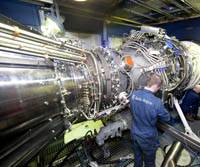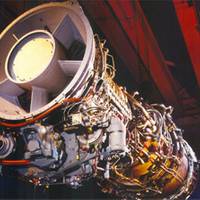Rolls-Royce Strikes Deal to Power 10 U.S. Navy LCS

Rolls-Royce announced the contract to supply gas turbines and waterjets for 10 of the U.S. Navy’s Littoral Combat Ships (LCS) – the Group’s largest ever marine naval surface ship contract. Designed to operate in combat zones close to the shore (littoral waters), each LCS will be equipped with two Rolls-Royce MT30 gas turbines powering four large waterjets, enabling the vessels to reach speeds in excess of 40 knots. At 36 megawatts, the MT30 is the world’s most powerful marine gas turbine.
GE to Supply Gas Turbines to Australian Navy

GE Marine will supply ASC Shipbuilding, Adelaide, Australia, with six LM2500 gas turbines to power three Royal Australian Navy (RAN) advanced Air Warfare Destroyers (AWD). Each Hobart class AWD will feature two LM2500s configured into a Combined Diesel and Gas turbine (CODAG) arrangement with two diesel engines. The vessels will be built at the ASC’s Osborne shipyard. The RAN’s new destroyers will use the same design developed by Navantia of Spain and used for the Spanish Navy’s F100 frigate program.
GE To Supply Gas Turbines for Royal Norwegian Navy
GE Marine Engines reported that its LM2500 aeroderivative gas turbine will power five new Royal Norwegian Navy F310-class frigates. IZAR Construcciones Navales, S.A., will build the frigates at its naval shipyard in Ferrol, Spain. This is the first naval Combined Diesel And Gas Turbine (CODAG) configuration to be installed by IZAR, and the Royal Norwegian Navy is only the second international navy to adopt this arrangement. The Germany Navy uses an LM2500-based CODAG configuration on its new F124-class frigates. The CODAG configuration on each F310-class frigate will consist of one GE LM2500 gas turbine, rated at 21.5 megawatts/28,832 shaft horsepower, combined with the two diesel engines for a total propulsion system rating of 30.5 megawatts.





